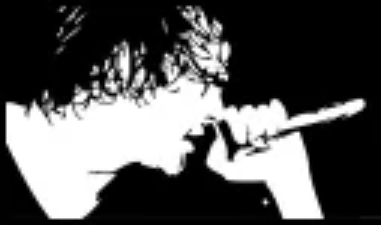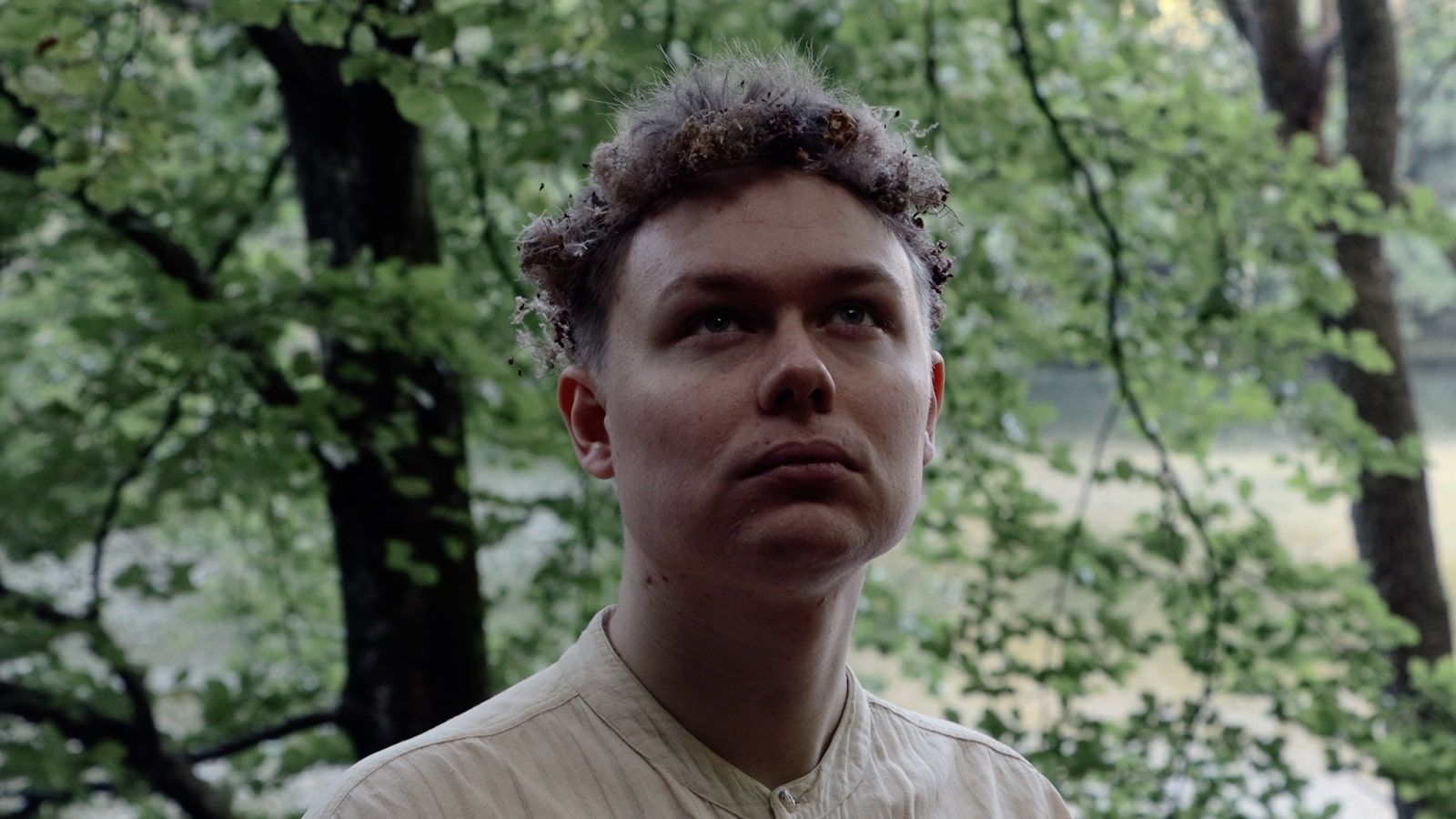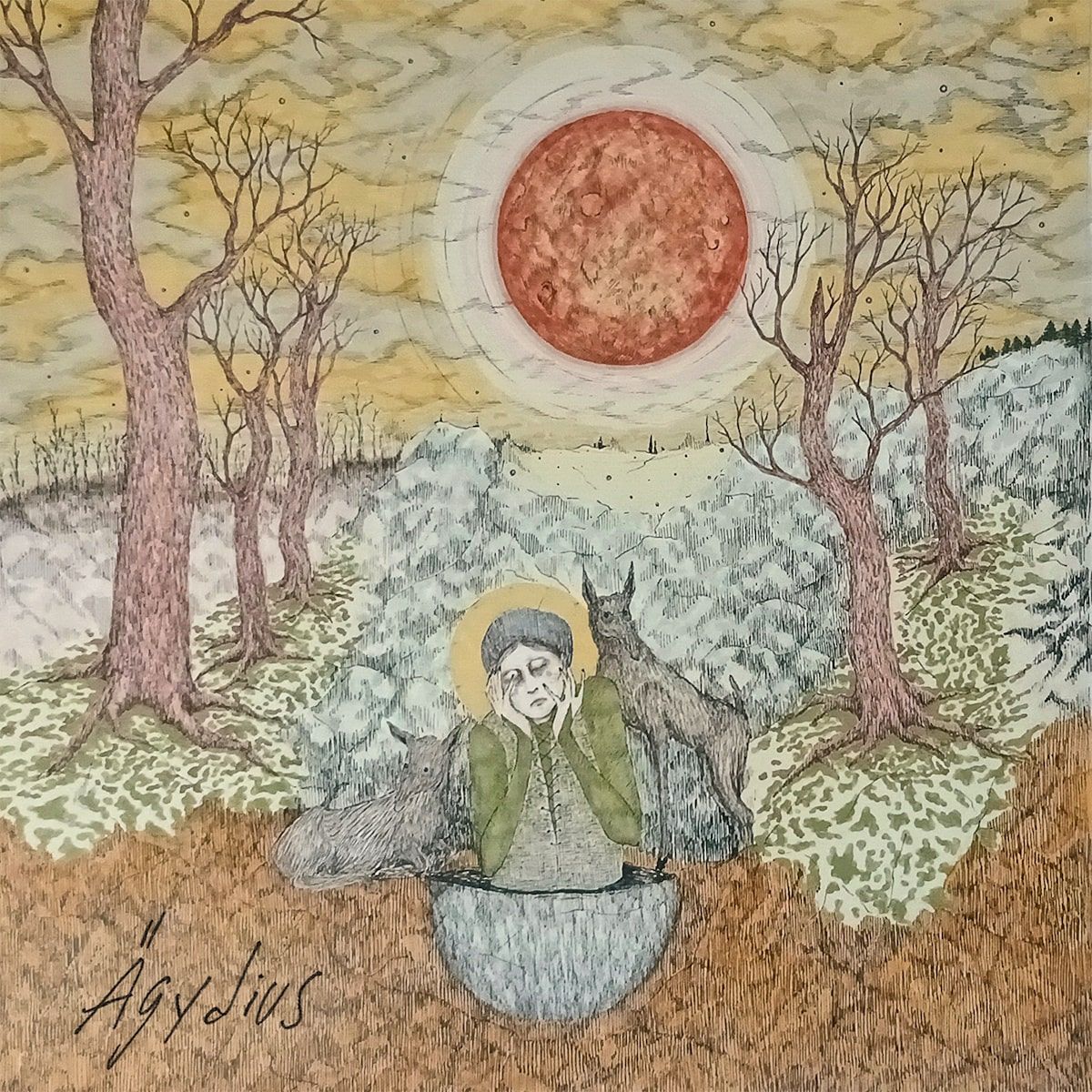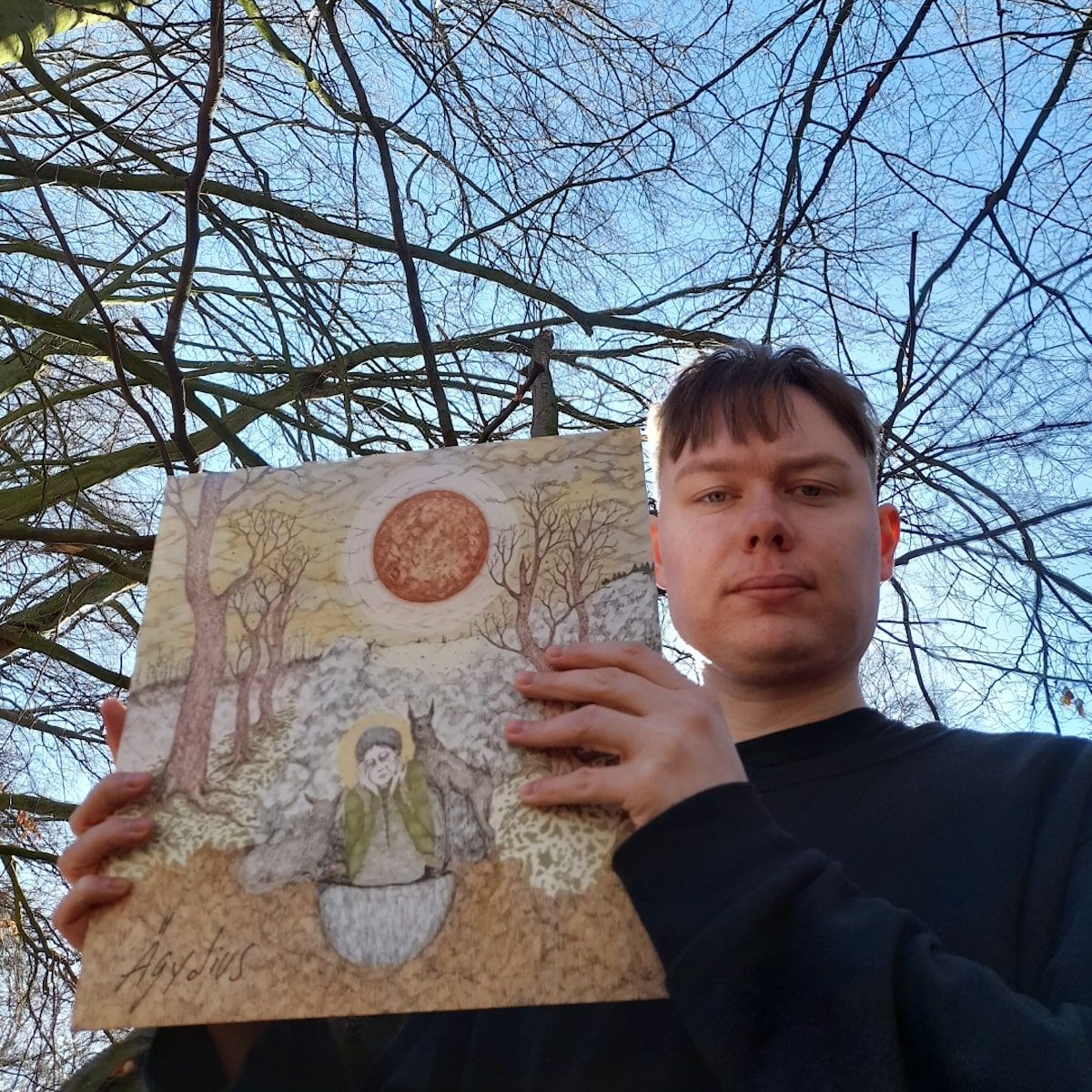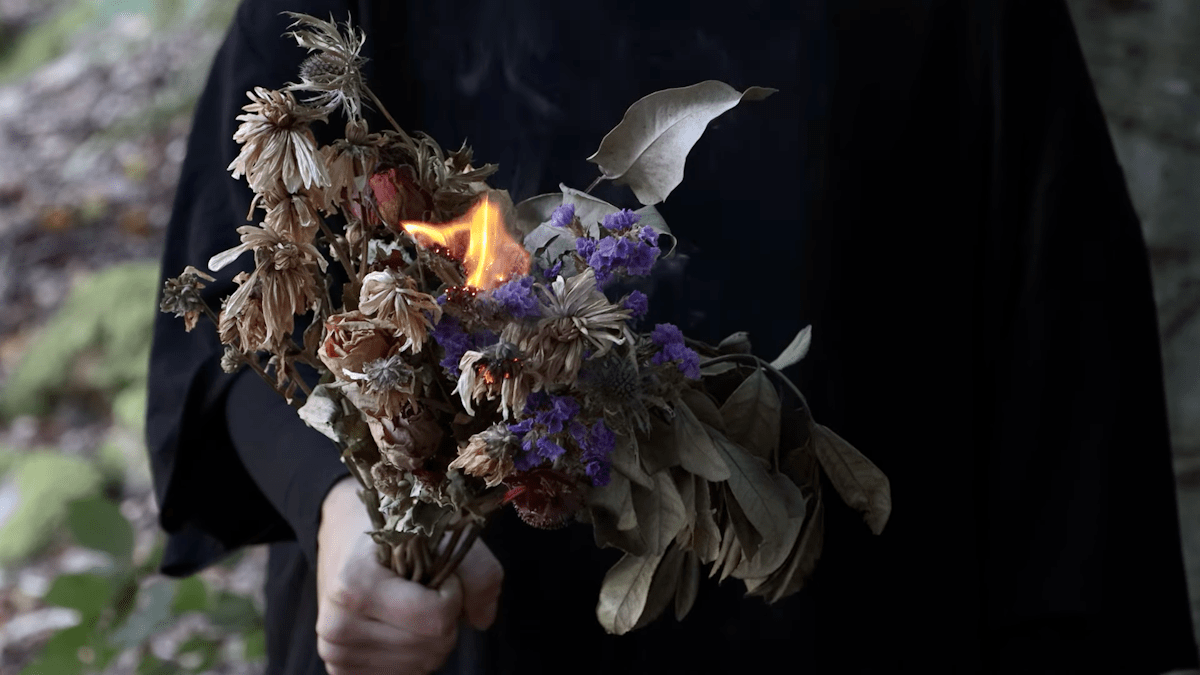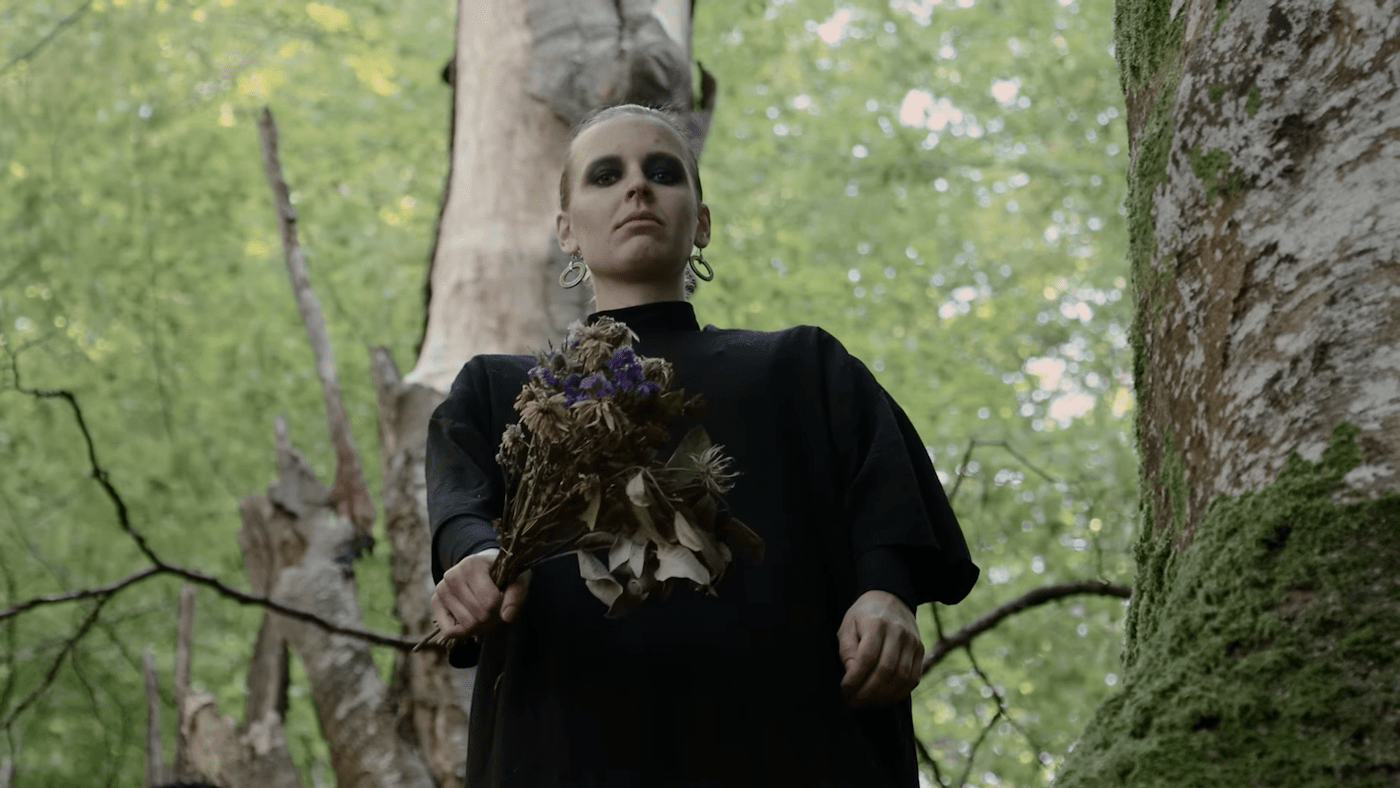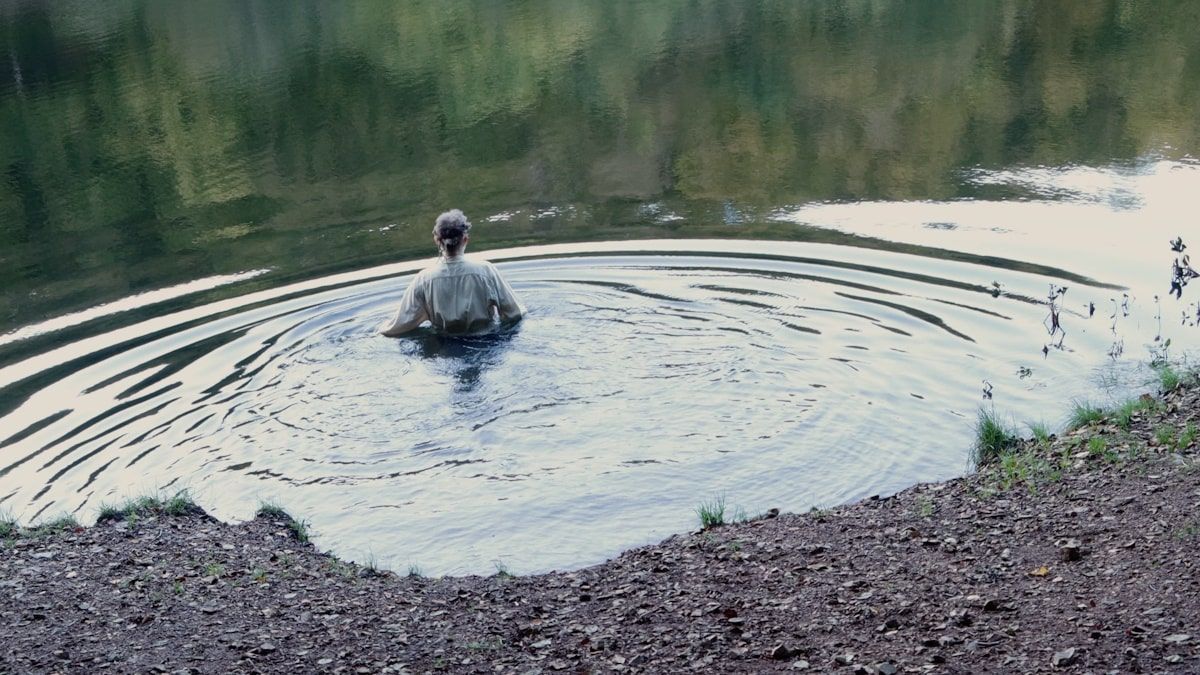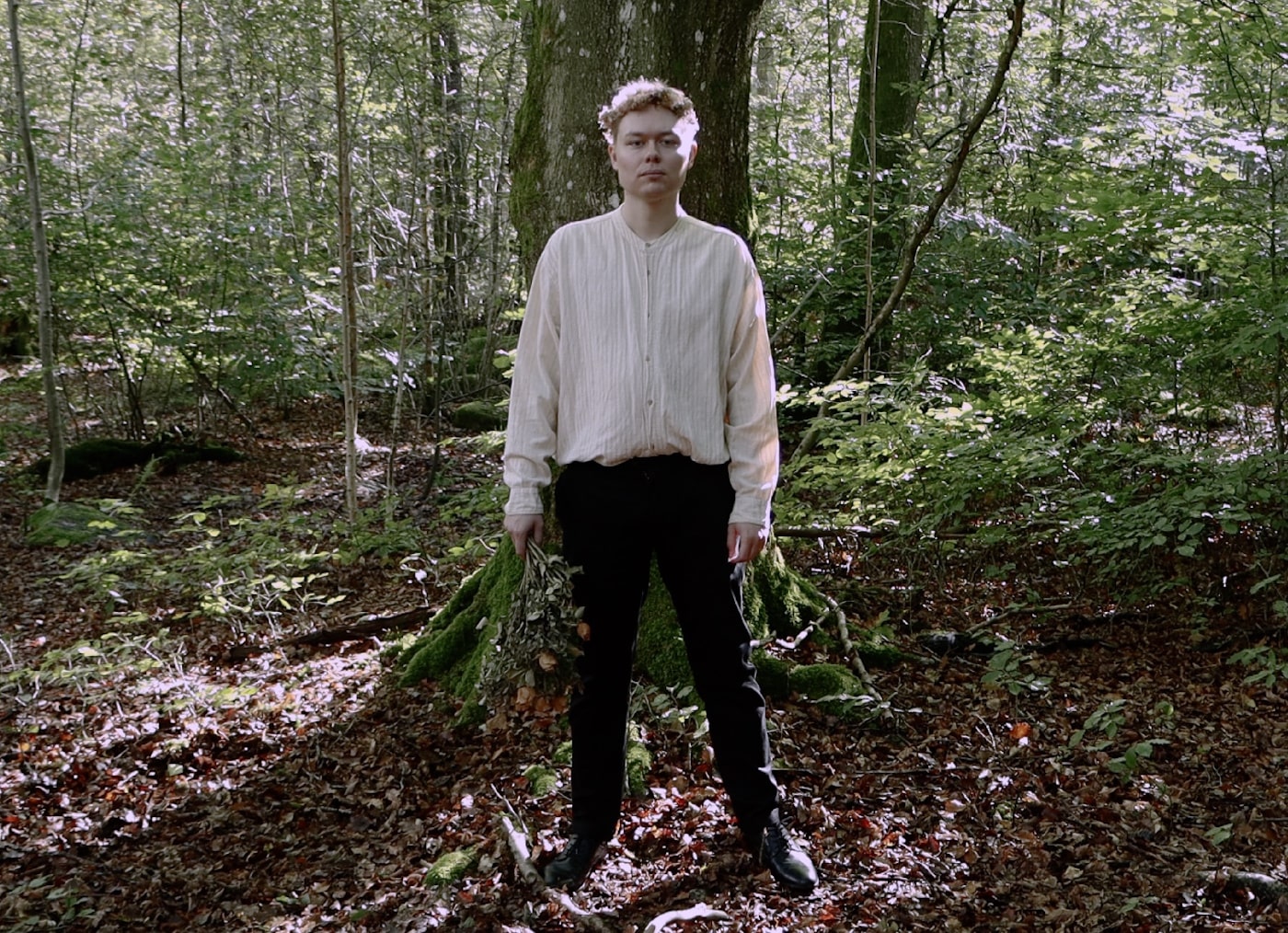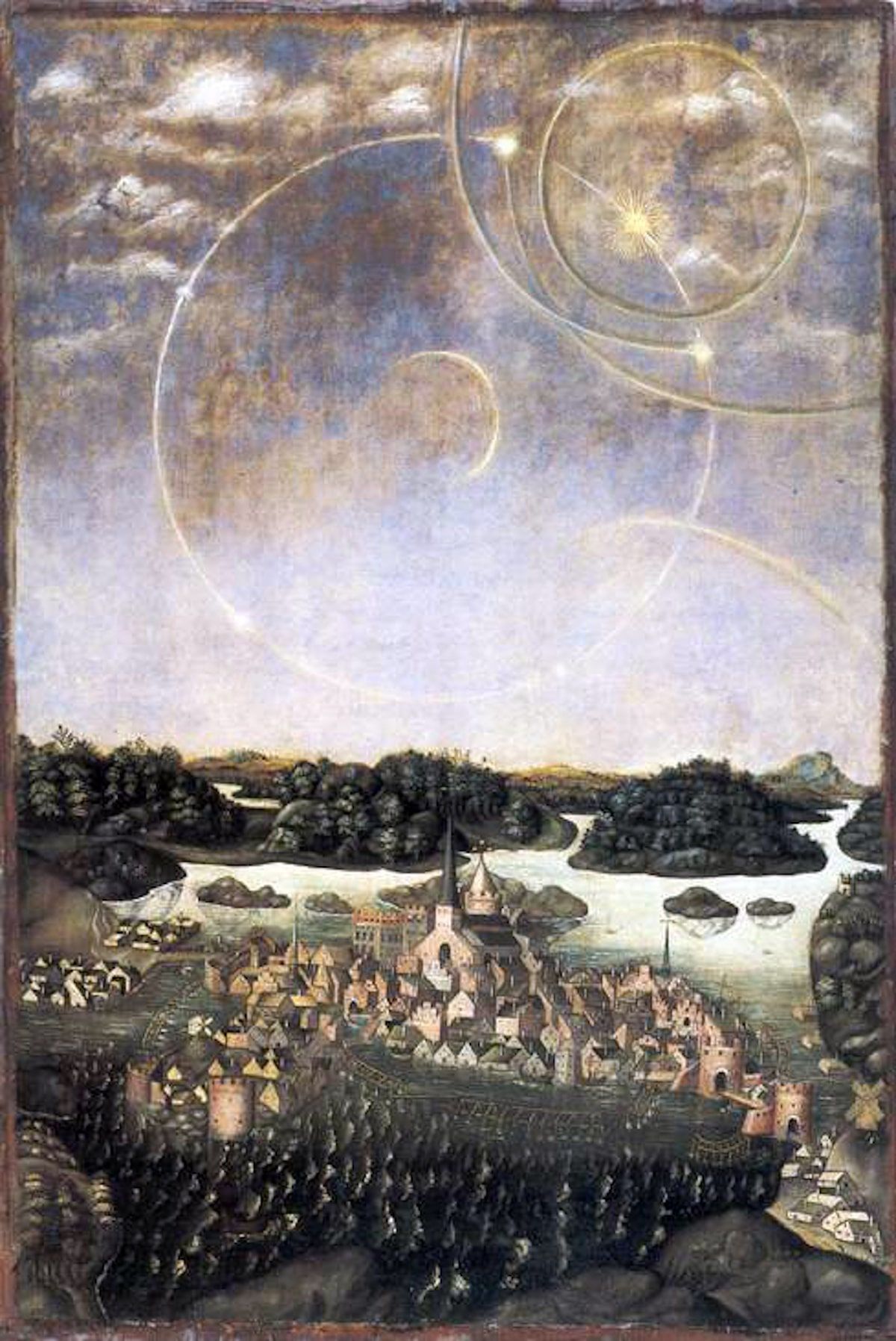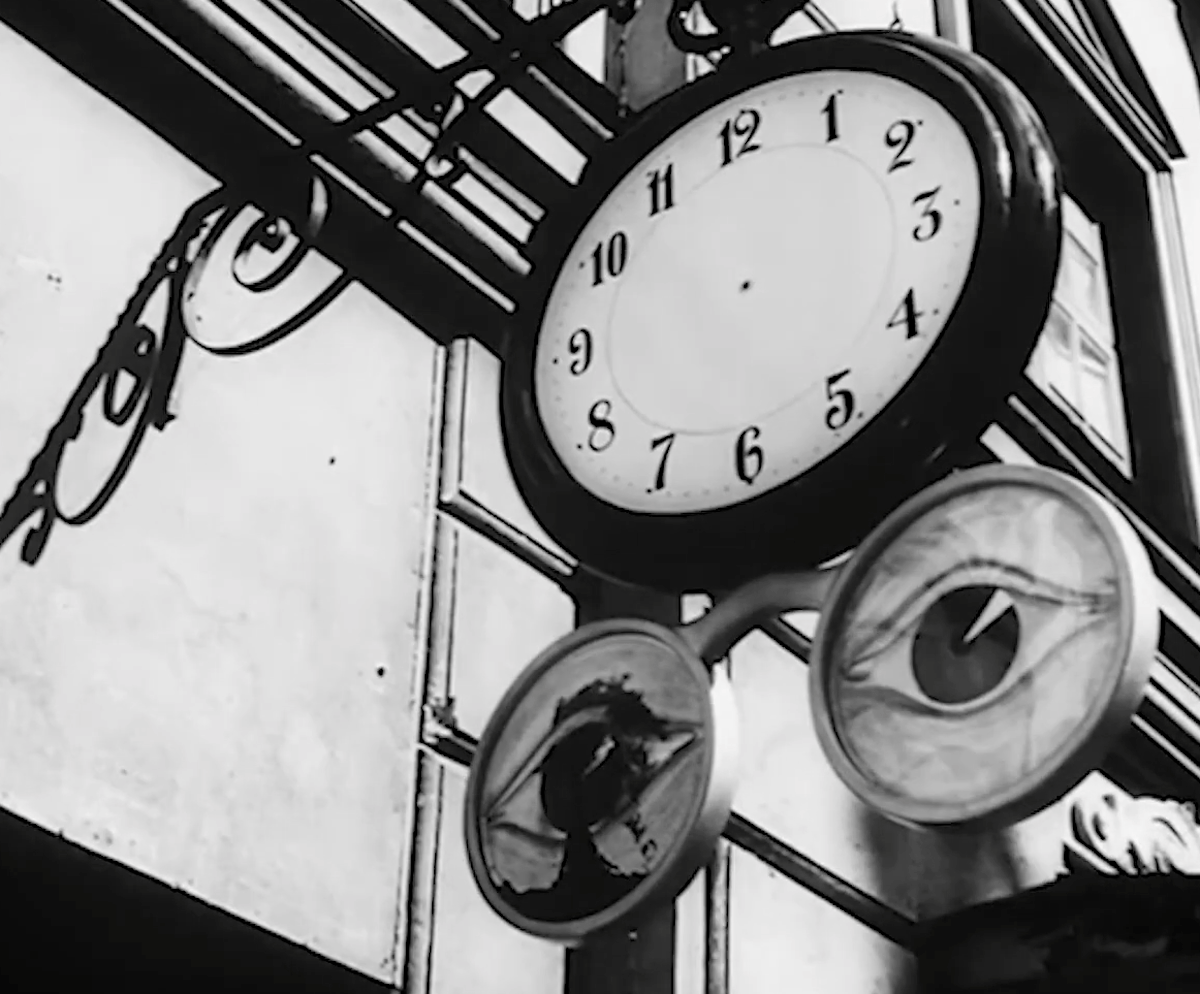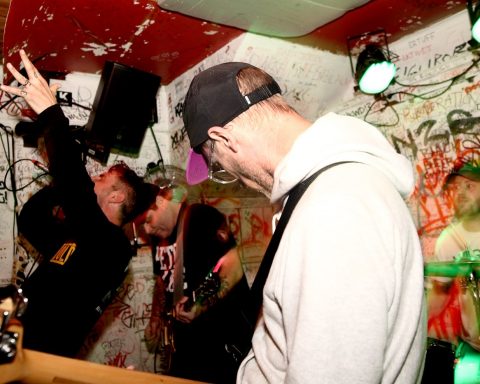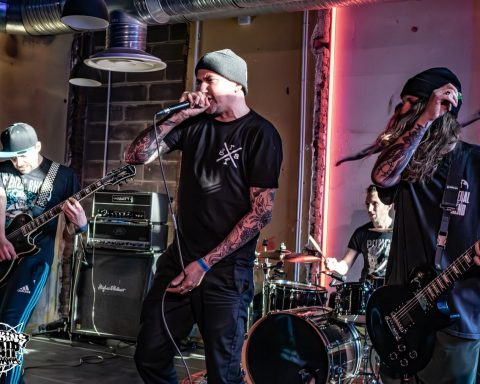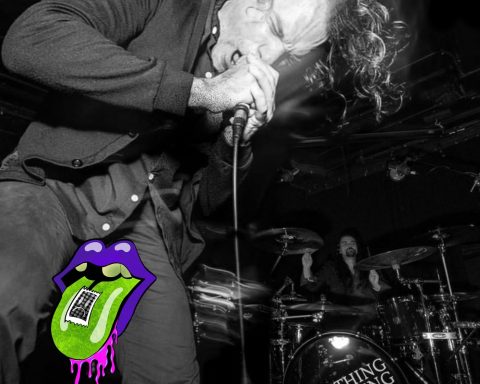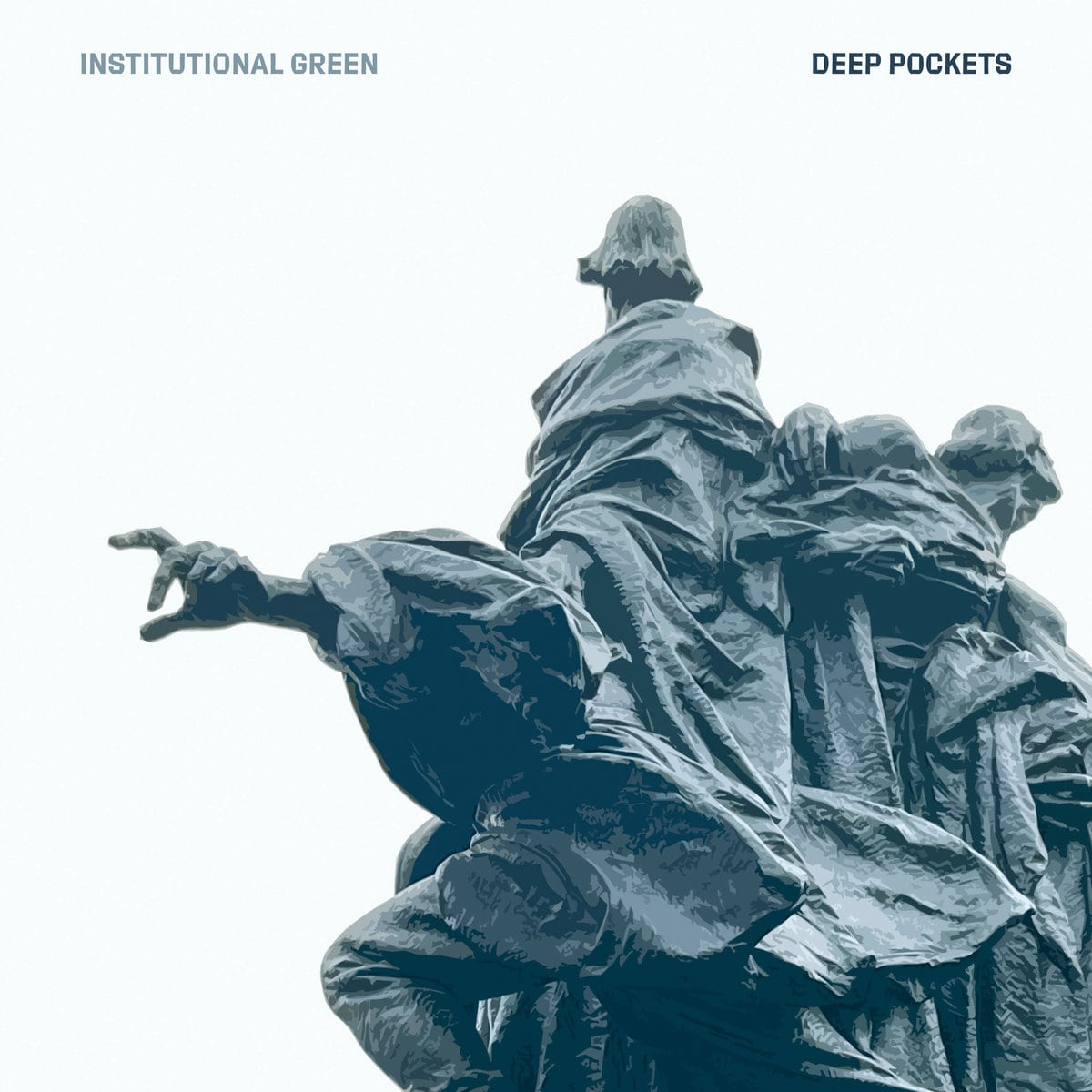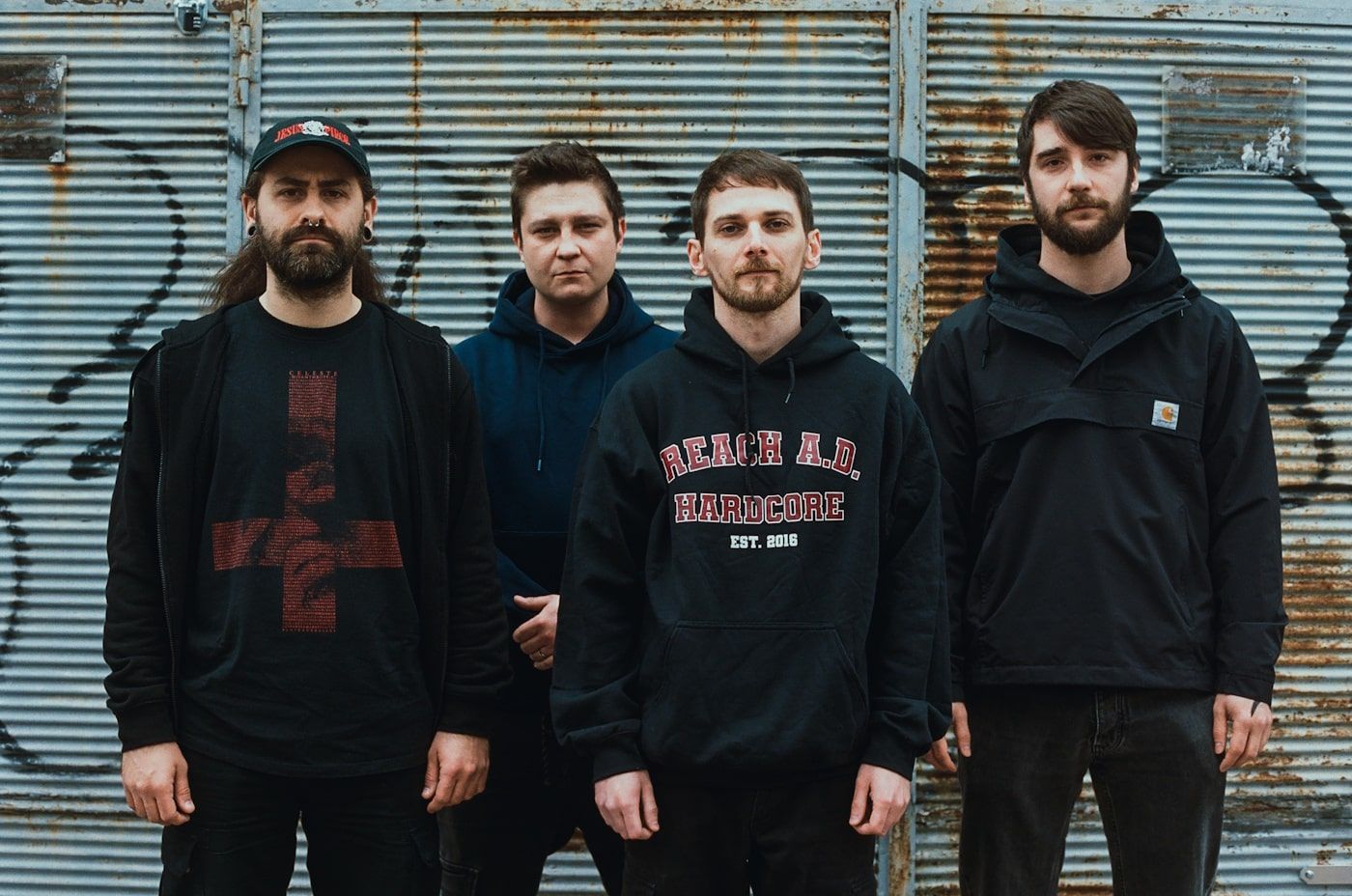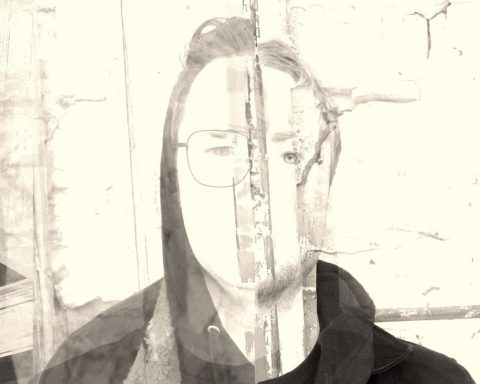Robin Sandquist, a Malmö-based multi-instrumentalist formerly of the post-rock band Sejd, has released his solo album Ägydius on vinyl through Sonde Records.
Combining alternative, indie-pop, jazz, and post-rock with traces of medieval mysticism, the album was shaped over years of personal experience, creative struggle, and quiet reinvention.
The name Ägydius comes from a 15th-century monk whose name lingered in Robin’s memory long after the content of the article faded. The music took root in inspiration from Hildegard von Bingen’s notations and was eventually developed into a full-length release centered around emotional catharsis and the tension between sacred themes and Nordic melancholy.
The core of the album reflects Sandquist’s exploration of faith, alienation, and time. In his own words, “Ägydius creates various experimental soundscapes that, as a whole, can provide some kind of catharsis for the faithless and hopeless.”
Robin previously gained some recognition with Sejd’s self-titled debut in 2015, followed by Ben & Hjärta in 2018. After a hiatus in 2020, he released the solo EP Hittepå and performed a multimedia concert titled Inom ramen, created in collaboration with artist Francesca Bonci.
He originally planned to use Ägydius as a moniker for future projects but eventually decided to keep it as an album series under his own name. Visual artist Ester Cavallin, who worked on the album art, developed her concept based on early demos. “The blend of the sacred and melancholy in her art really helps set a tone for the music,” Robin noted.
Live performances supporting the vinyl release are set for April 23 at Barnens scen and May 3 at Lilla stan, the latter also featuring an exhibition of Robin’s artwork.
He remains hopeful for more shows in the future, possibly abroad, noting that Malmö’s local scene hasn’t been particularly receptive to experimental post-rock. “Some venues told us that our style of music was dying,” he says of his time in Sejd, but adds, “I try to keep up and create a stage that can cover music like the one I’m doing.”
Musically, Ägydius moves between structured pop and ambient, almost liturgical sections, with each track contributing a chapter to the larger emotional narrative.
With Ägydius, Robin Sandquist has created a work that avoids grand gestures yet resonates through its attention to emotional texture, memory, and understated personal storytelling.
The vinyl release, now available via Sonde Records.
Ägydius Track by Track:
1. I bergbrottet
This is my most spiritual song.
”I bergabrottet” is translated roughly to ”In the Quarry”. The songs lyrical content was heavily inspired by The Seventh Seal by Ingmar Bergman. The story of people in crisis of faith in an apocalyptic world deeply affected me, especially the final scene where everyone gives in to their own fate. ”I bergabrottet” follows an individual who also has that same sorrow and despair, crying out ”Do you feel any sadness for me who has no one by my side?”.
The song has a long build up starting up with the following phrases from our main individual sung by Robin ”It’s getting close now, I can feel it in my body, a moment of peace, fly like a raven”. Robin continue singing ”It’s gettting close now”, responding to that two disembodied voices can be heard singing ”feel” sung by Klara and Martha. Whilst these voices continue another phrase is added ”Fall down, your time has now come” and after that ”Fall down, in the depths you have fallen”.
During these phrases another voice can be heard singing ”Come close, come closer”. This erupts in the last stage where the main vocals sing as mentioned before ”Do you feel any sadness for me who has no one by my side?” to the finally modulate back and forth with another phrase ”Look away and close your eyes, take me, take me”.
The music swells over with a sea of piano in the end – drowning out all the cries of despair.
View this post on Instagram
2. Efterskalvningar
After the long previous piece comes a quiet and intimate moment, ”Efterskalvningar” can be roughly translated to ”Aftershocks”. This is the contemplative time to rest after the quakes. The songs has no lyrics but build a landscape with echoing percussion and wooden timbres from the hurdy-gurdy (played by Sebastian) and the double bass. The piano is the connecting tissue between the songs and it goes away in the last part (an actual arrangement error on my part that I decided to keep in) to just let the guitars and wooden timbres stay as we transition into the next song.
View this post on Instagram
3. Hem
Nordic melancholy meets indie-pop in ‘’Hem’’. The intro cradles you into a meditative state which builds into a dense orchestration of different instruments and timbres. During the verses the vocals are very intimate – telling a story of past anguish.
The song is the most ”pop-like” in its structure in the album, following a more standard – intro, vers, pre-chorus, chorus, vers, chorus. This mainly due to the song itself was written around 12 years ago, and his been a personal favourite of my old ideas. I’m glad to finally be able to capture the idea make it justice both through sound and also it contents which explores that period of my life.
In the video you follow Robin as he wanders in the woods and stumble upon an entity (covered in all black) who directs him to the nearby lake. When arriving at the lake Robin struggles internally and finally decides to walk into the lake – and we don’t see him come out again.
My inspiration for the video was from a period of depression in my early twenties – and a trip gone bad – I decided to go outside.
Feeling numb and not sensing the freezing weather I thought of going into the lake – to end my life – but after collecting my thoughts after a little while I decided not to, and went home instead.
By doing this music video (by also committing to go down the cold water myself) it became in the end a therapeutic and cathartic experience which I needed to do the cleanse my old thoughts and to move on with my life. Hence the lyrics which is translated from Swedish in the end: ‘’Nothing exists for you in the past’’
4. Tiden det tog för dig att försvinna
Translated ”The Time It Took for You to Disappear”
The lyrics to this song is very brief:
”By my bed you floated away, you died inside, again”
”The time it took for you to disappear, now we’ll take it again”
It was from a time I spend with a person who after an argument put themselves in a sedative state. It made me very distraught seeing the life slowly fade away from this person in real time, and this was a recurring event.
The music was made with the possibility of growing into a longer song when I first wrote it, but I liked the condensed structure (so much that I use for other songs and ideas as well) intro, A-part, B-part, C-part – end. It’s a very direct structure that goes away from the pop/rock-oriented structure, by doing this I felt it gave the album a better flow to not stay to long with some ideas (if there’s no real need for it either musically of lyrically)
– In the final minute of the song there’s a quick hint of song number 6 –
5. Bluffmakaren
Translated ”The Scammer”
Lyrics:
”Like a mirror you look at, it moves, you’re inside”
”You cry, you don’t see yourself, you ruin it, oh”
”You’ve forgotten yourself, you’ve forgotten yourself”
”You’ve forgotten yourself, you’ve forgotten yourself”
Now follows another shorter condensed song. This time just doing a verse and chorus once and then use an interlude as it’s anchoring part to solidify the whole. This song follows a theme of depersonalisation disorder and the initial reaction towards that.
Having then destroyed the mirror a guitar plays a tremolo interlude that goes into a chorus, this becomes the climax of the song, then comes a contemplative part where the voices sing ”You’ve forgotten yourself, you’ve forgotten yourself”. After that we go back to the guitar in a final interlude. A quick cut at the last note leads into the next song.
6. Mellankolonin
A play on words in Swedish. A mix of melancholy and colony.
The timbre is built on wood and the instrument play a happy song.
The shortest song of the album, and it kicks off straight away after the quick cut off form the earlier song. Gradually vocals enter the mix until the end where we’re just left with vocals alone harmonising a dense soundscape together. The shifts in the end from a playful tone to a more sombre and melancholy vibe.
By the end we also get another quick transition going into the next song.
7. Brinnande balen
Translated ”Burning Ball”
This song was inspired musically and lyrically from the artwork Bal des Ardents. The tone and instrumentation are more ”folky” in this song to accompany the folkloric mood.
The story follows the mad king Charles VI of France who were obsessed with cleanliness and believed himself to be made of glass. The disembodied voice at the start of the song reflects the kings frame of mind and inability to hear correctly (the vocals were distorted and reversed). Next comes a part of madness with piano in full distortion and distant screams (the king himself groaning).
The next part follows the actual masquerade ball in which the king held a dance performance of several men dressed up as wild men. The lyrics goes:
”Torches are lit, the flame burns, the fire spreads among the people”
”Wild men dance around, the ball burns up, the king smiles”
As the musical cacophony of flutes swells and vocals hymns reaches its climax the song finally ends with the last description of the king smiling – while his masquerade ball burns.
8. Fula svanar
Translated ” Ugly Swans”
The title of this song is from the film by Konstantin Lopushansky called The Ugly Swans. I saw the film a long time ago, but I remember feeling a lot of sympathy for the alien invaders in the film especially seeing how the humans evaporate beings that are beyond our comprehension.
The lyrics repeat throughout the songs with the following ”Don’t come any closer, don’t touch me”.
Having put myself in the likeness of these aliens then feeling an overall alienation towards humanity – hence the outburst of the lyrics being directed towards people in general. The song is also structured on growing into something beautiful, from and ugly duckling into a ugly swan – still ugly but now evolved. The lyrics are still the same at the second part, but now an disembodied voice sings the following phrases: ”You are closing yourself” ”You are following along”, this solidifies the ugly swan still being ugly in the end and reluctantly conforming to society. A bittersweet story.
9. Vädersol
This title of the song was inspired by a painting – Vädersolstavlan, and has had that name since I wrote this song 8 years ago. There’s a connection to oldness and a Swedish nostalgia I’ve felt with this song, this later came together as a whole when I saw the film Wild Strawberries by Ingmar Bergman which is a film that deals with and explores your memories of getting old.
The lyrics:
”The arrow, it has come loose”
”Lie down on the grove, everything is real now”
”You didn’t find what you lost, you broke promises, everything”
”Come and we’ll go away, beyond where no one knows, as long as you’re along, before time evaporates”
”Come and we’ll go away, beyond where no one knows, the adventure, then take your body and rest”
”Time is like that, it goes, it goes”
”Time is like that, it goes, it goes”
”Time is like that, it goes, it goes”
”Time is like that, it goes, it goes”
”Come, your time is now over, the clock has stopped ticking, left alone, be naked forever”
”Come, your time is now over, the clock has stopped ticking, come with me here, sit still, close your eyes”
When the we’ve reached the halfway mark of the piece we go into the outro of the album. This part can be seen as its own song entirely (its initial name was Ägydius itself – the sacred personification of Robin).
The outro builds in a classic Post-rock style where it crescendoes using all the instruments we’ve gotten so far in the album – Flutes, trumpet, hurdy-gurdy, organ, double bass rested on the steady beat on the drums (played Marcus) and the enduring piano (played by Tilda) that is playing throughout the outro.
This part of the song was the second I did trying to record it, the first effort I did several years I got stuck on playing the piano part in one take and failed after a great take to maintain the form, and instead of saving it in the edit I decided to shelve the whole project. Last year I finally manage to get it recorded as initially intended, and that was a really important hurdle to overcome in my own creative process.
Find Robin a lot lot more post rock acts on our epic post rock playlist on Spotify:
Keep in the loop!
🗞️ Subscribe on Substack
🔔 Join our Messenger and WhatsApp
📜 Get daily news via Instagram Stories
Your support keeps us alive!
IDIOTEQ is a one-man DIY operation, tirelessly spotlighting the local cultural scenes and independent bands that often go unreported elsewhere. Born in the early 00s, this platform has been committed to giving hard-working artists the high-quality coverage they truly deserve.
No ads, no distractions—just pure inspiration and a genuine focus on independent artists and their stories.
Please consider helping keep IDIOTEQ ad-free and in tune with the indie scene by donating today.
DONATE via PayPal 𝗈𝗋 SUPPORT via Patreon
100% of the funds collected go toward maintaining and improving this magazine. Every contribution, however big or small, is super valuable.
Your support ensures that we continue to be a place where you can discover, learn, and get inspired, without any advertising noise. Thank you for being a part of this musical journey.

